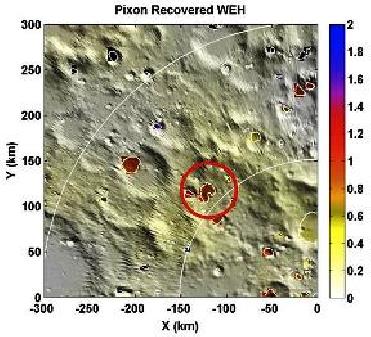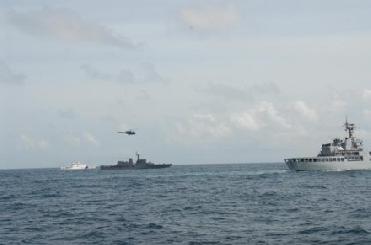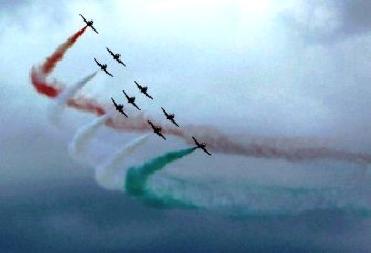
A map showing the south polar region of the moon and the target crater Cabeus. The coloured pixels represent permanently shaded regions and their equivalent water concentrations. Image Credit: Dr Vincent Eke, Durham University/NASA.
DURHAM (BNS): A rocket crashing into the Moon will create �one more dimple� on the lunar surface and could help find water ice on Moon, according to a Durham University expert.
Dr Vincent Eke�s research has helped inform NASA�s decision about where to crash its probes into the Moon�s surface in search of water. Dr Eke is from Institute for Computational Cosmology, at Durham University.
The Lunar Crater Observation and Sensing Satellite (LCROSS) and its Centaur rocket will smash into a crater in the Cabeus region of the Moon�s South Pole next week. Impact has been timed for approximately 2430hrs BST (2238hrs IST) on Friday, October 9.
According to the research findings, water in the form of ice could be found in the frozen confines of the Moon�s polar craters where temperatures are colder than minus 170 degrees Celsius.
This September data from three spacecraft, including Chandrayaan-1 probe, showed that small amounts of H2O coated particles that make up the Moon�s soil.
Dr. Eke said, "Water ice could be stable for billions of years on the Moon provided that it is cold enough. If ice is present in the permanently shaded lunar craters of the Moon then it could potentially provide a water source for the eventual establishment of a manned base on the Moon," as per a news release by AlphaGalileo from Durham University.
Dr Eke�s research, published in the International Journal of Solar System Studies, Icarus, was carried out in collaboration with Dr Richard Elphic and Dr Luis Teodoro, who work in the Planetary Systems Branch at NASA Ames Research Center in the USA.
 Previous Article
Previous Article Next Article
Next Article













The Indian Air Force, in its flight trials evaluation report submitted before the Defence Ministry l..
view articleAn insight into the Medium Multi-Role Combat Aircraft competition...
view articleSky enthusiasts can now spot the International Space Station (ISS) commanded by Indian-American astr..
view article